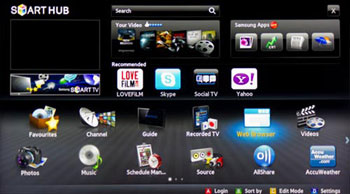Worldwide sales of Smart TVs are set to go through the roof over the next five years, with experts predicting some 220 million devices to be snapped up by 2017.
 |
| Majority of Smart TV sets in 2017 will not be connected |
This news might not come as much of a surprise to industry watchers, but what does raise a few eyebrows is that more than half of these new Smart television owners are likely to use their new devices in exactly the same way as the older, unconnected sets they throw away.
According to the latest forecasts from Informa Telecoms & Media, its 220 million estimate will be a dramatic increase on the current 54 million Smart HDTV sets sold globally in 2012, meaning that an astonishing 31% of all households in the world will own at least one such device, rising to 64% in Western Europe and 63% in the United States.
Sadly though, the coming Smart TV frenzy could well be a waste of money for a significant chunk of users – possibly as many as 50% – who will not be making use of any of their new display’s smart capabilities. Instead, these users, if they partake in any online TV activity at all, are likely to continue doing so via traditional connected devices like PCs, video game consoles and set-top boxes, reports Informa.
However, Informa suspects that the reason for this is not one of stupidity on the part of Smart TV owners. Instead, the analysis firm states that because TVs are purchased far less often than other gadgets, Smart televisions are likely to be less “up to date” than other internet-capable devices.
Andrew Ladbrook, senior analyst at Informa, wrote in his blog post that “Informa predicts that as many as 50%, and possibly even more, of the Smart TVs purchased in 2017 will be used as ‘dumb screens’”.
“Smart TVs bought in 2011 and 2012 can only be used for internet streaming for three or four years,” adds Ladbrook. “After that, these devices do not have sufficient processing power to do so, given the constantly evolving technology.”
In other words, buy a Smart TV today, and by 2015 it will almost certainly be rendered obsolete.
The findings highlight that for many consumers, the Smart TV market is simply moving too fast for them to keep up. What with the proliferation of new apps and services like Skype, the BBC iPlayer, OnLive, HBO Go and NOW TV to name just a few, older TVs simply cannot keep up – and consumers cannot afford to keep upgrading.
Another problem is due to the Smart TV manufacturers themselves. Different brands are using different technology standards, which prevents the widespread adoption of applications in connected TVs. The reality is that developers cannot launch their apps across multiple devices without making a huge effort, because each manufacturer’s device requires bespoke programming.
Of course, not everyone is complaining about this. For market leaders like Samsung and LG Electronics, the status quo suits them down to the ground, as they can attract the best developers and services, and thus maintain their monopoly of the market.